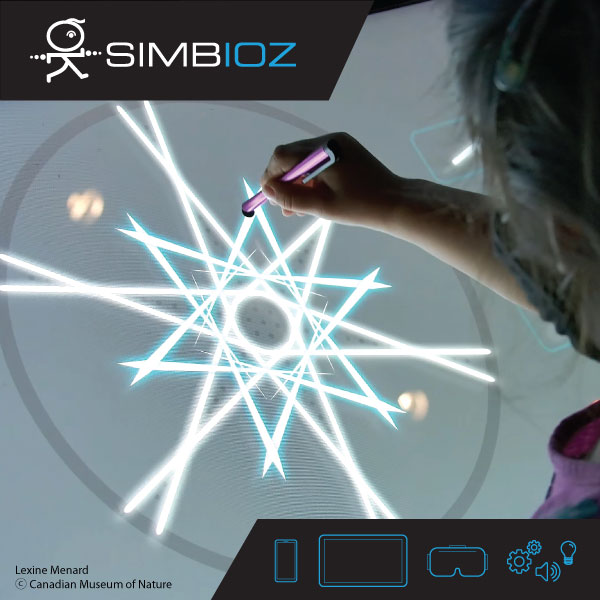Rethinking Commemoration Through Digital Initiatives
Pamela Plamondon

The Canadian National Vimy Memorial. Photo — Pascal Brunet, 2021
Vimy: A Living Memorial is the newest project from the Vimy Foundation, created in partnership with Veterans Affairs Canada and the National Film Board (NFB). It uses new technologies to place commemoration and military history in a more modern context. Despite being closely linked, we distinguish between the two concepts when we understand military history as the theoretical discipline itself, whereas commemoration means representing everything that has to do with reflecting and using a story to cement a group’s identity, raising awareness to the particular significance of that same history and creating powerful symbols.
The impact of digital strategies in cultural and remembrance institutions has already been demonstrated, and the COVID-19 pandemic only accelerated digital integration. Additionally, considering that the physical site we promote is found overseas, and therefore not accessible to many Canadians, inspired the Vimy Foundation to look online to raise awareness of the Canadian National Vimy Memorial and its rich history.

Driver James Grant, M.M., whose story is featured in the app. Photo — Niece Donna Ford, Past President Central Ontario Network of Black History
The goal of the Vimy: A Living Memorial project is to bring Vimy to Canadians and the international public, while transforming the experience of commemoration. The project is experienced through two online platforms. The Digital Pilgrimage, created by the NFB, offers a virtual space of remembrance that immerses the users in a personal reflection through various testimonies, helping them better understand the importance of the Memorial as a testament to peace. Meanwhile, The Expedition, a geolocational mobile app, brings the rich historical context of the site to life through site-specific stories with artefacts, images and sound.
The Expedition is a modern approach to teaching about Canada’s military engagement during the First World War. It is an entirely digital tool, accessible from a smartphone, and can serve both as a guide and complementary information for on-site visitors in France and as an educational tool for those who can’t visit in person. The stories presented in the app recall the events of the Battle of Vimy Ridge, as well as the aftermath from the construction of the memorial to the maintenance of the site today. The portraits presented also aim to include a larger diversity of testimonies and experiences, and highlight the socio-political issues of the time, which were inevitably reflected in the Canadian military.
The Digital Pilgrimage component takes an even more interactive approach. A series of historical and modern testimonies that range from the First World War to the Canadian mission in Afghanistan will be available. Inspired by the sculptures on the Vimy memorial, the testimonies are organized into themes like grief, hope, faith and charity. These first-hand accounts explore the profoundly human experience of conflict, one that is as universal as it is deeply personal. During their digital journey, users will be invited to share their own story, written or oral, by responding to the question “What is your personal relationship to war?” This user-generated content will eventually be added to the platform, which will help engage and enhance future experiences.

Screen capture from the Digital Pilgrimage
For obvious reasons, the testimonies in this context can be shared anonymously or not, depending on the user’s choice. As the project progressed, multiple concerns around collecting, moderating and archiving the testimonies arose. The strength of working with oral history as a tool of participative commemoration is undeniable; nonetheless, because of the sensitive nature of the subject and potential abuses, it is essential to trace clear and precise guidelines to avoid unwanted surprises, while also leaving enough space for users to tell honest personal stories. It is undoubtedly one of the toughest challenges faced by the creative team working on this project, and solutions are still under consideration.
These user-generated testimonies are undoubtedly precious resources that could be employed in multiple ways. For example, in the future, they could be analyzed for what they can reveal of the experience of war through time and place, or they could form a database and inform research on oral history, its modalities and the issues concerning the collection of testimonies in the context of conflict.
We hope that by recognizing the universality of the experience of war and creating opportunities for self-expression, we will reach those who do not currently concern themselves with commemoration of Canadian military history despite its importance in our shared heritage. It might even be possible to suggest that the future of commemoration lies in the recognition of these relationships, which begin with the individual and transform into collective reflection. It is by putting this forward, while keeping these stories rooted in the course of history, that a new generation will be able to engage with this reflective space and consider commemoration as something more tangible and still very relevant. M
Pamela Plamondon started working at the Vimy Foundation as special projects coordinator after earning a master’s degree in museum studies and a bachelor’s in anthropology.
Vimy — A Living Memorial will be launched on the 105th anniversary of the Battle of Vimy Ridge, April 9th, 2022.
